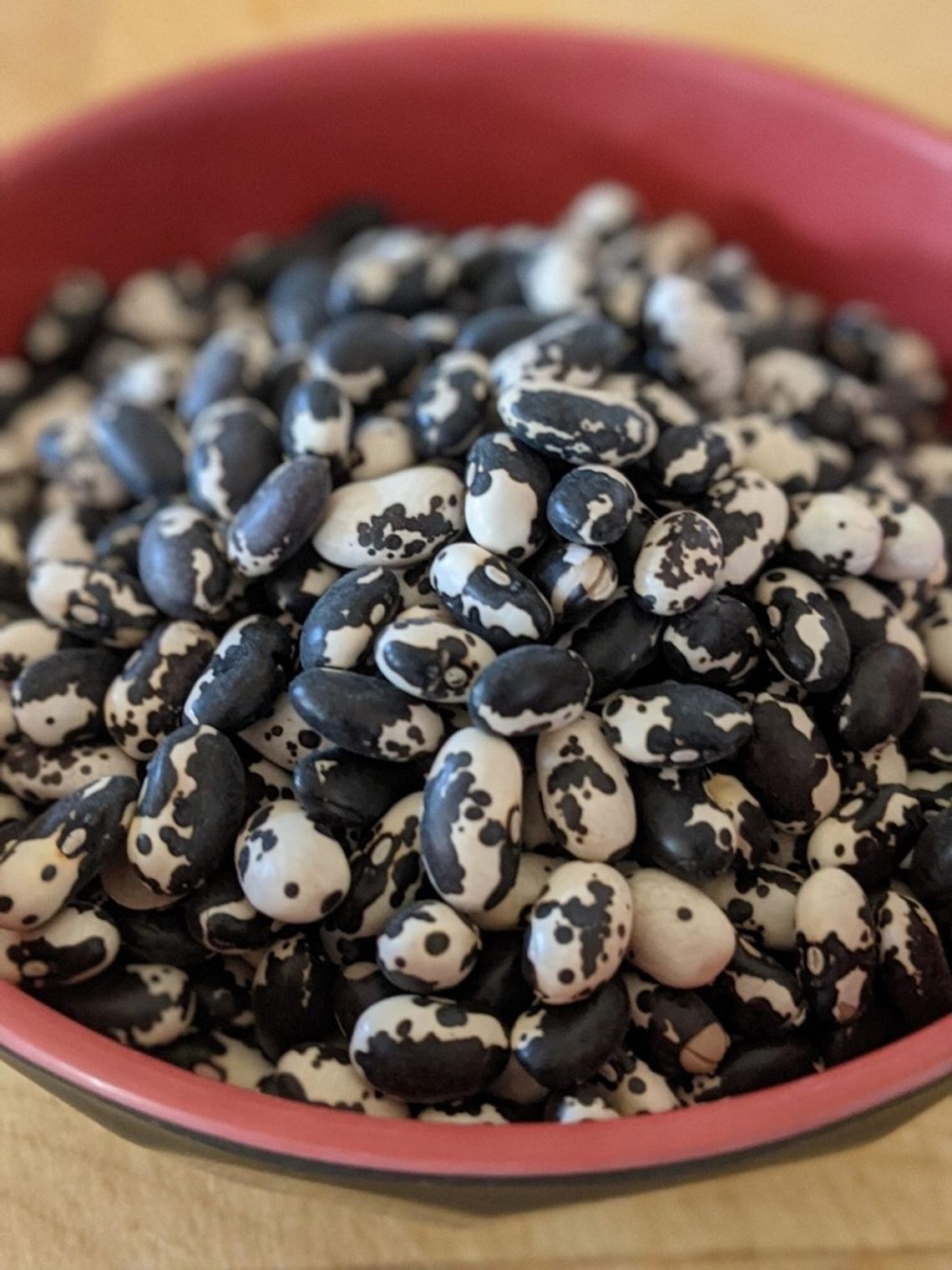It all started with a pot of beans.
No, that’s not quite right… It all started with one of those spring days; overcast and blustery about 15 degrees cooler than the day before and the forecast for the day to come. You know the kind of days that I am talking about home gardeners who, having put tomato seedlings in their garden inspired by sunshine and warm weather, suddenly rush to protect their delicate plants with walls-of-water or inverted soda bottles; the internet flooded with memes about Nevada springtime and the necessity for clothes befitting ALL of the seasons required in a single day.
I had just finished an article about matching culinary dishes to the weather and I was anxious to turn my attention towards grilled meats and cool salads, hoping to put winter dishes on the backburner until October. Then there was rain, and I needed a jacket for my trip to town. My husband had been asking for Swedish meatballs for a week or so and in all marital fairness, I should have made them for him--my argument that Swedish meatballs are a cool-weather dish not so valid when the mercury tops out at 45 degrees... but instead, I started a pot of beans on the stove.
The beans that I picked are called “Vaqueros” and they are just the cutest little beans--they look like cows (or my cow dog) spotted black and white. Vaqueros are a perfect chili beans; chili is the type of dish that exists without seasonal limitation. Chili is as perfect served on the first cool night of September, Superbowl Sunday, and at a July cookoff. And chili is exactly what I wanted to cook on this chilly (see what I did there) April afternoon.
There are many strongly polarized debates, impassioned arguments, and rigid opinions about chili--for once, I am not here to proclaim judgment on what makes the best (or ‘true,’ or real, or the only) chili. Instead, I want to share what I like to think of as my Chili Philosophy along with some helpful hints to guide you in the process of maximizing your own personal pot of spicy deliciousness.
Beans vs. No-Beans
Alright, I misspoke--I totally believe that beans belong in chili. But if you disagree, I will still eat your chili. I just might put it over a hotdog, a baked potato, or some tater tots. If you choose to use beans, here are some thoughts:
- Dried beans are ≥ canned beans
- Dried beans will NEVER get soft if they are simmered in an acidic liquid (like tomatoes), so you will need to fully cook the beans first before crafting your chili.
Meat vs. No-Meat
I would contend that you can make a legit chili that is vegetarian (or vegan) and that meat is exactly as essential as beans--not essential at all. That being said, my chili always has at least 2 types of meat in it. For the vegetarians out there, sub in some beyond burger or don’t--I will still eat your chili.
- Meat can provide an amazing texture to your chili. Choose a variety of types of meat to maximize the flavor profile and varying mouthfeels.
- I use at least 1 type of “ground” meat. You can use ground pork, ground veal, ground beef, ground bison, ground lamb--the only limit is your imagination. Chili is also a great vessel for utilizing the grind from your last game animal (antelope, elk, venison, etc).
- Sausage!!! Buy it in bulk or cut it out of the casings yourself before browning in the pot. Mild, Hot, Sweet--the only sausage that you shouldn’t use is the kind made for breakfast.
- Don’t forget to add some kind of chunky meat. I opt to buy a roast or country-style beef ribs (basically a grill-friendly cut like flat iron that has been sliced into “rib-like” strips), rather than buying “stew meat” though that works too. The best cuts for chili are ones that do well with long cooking--typically those with intramuscular fat and connective tissue. This is not a dish that needs (or warrants) a more expensive cut.
Chiles
- The best chili uses a variety of chile peppers in a multitude of forms (fresh, dry, roasted, smoked, powdered, flakes, etc.). I mean, we call it ‘chili’ for a reason!
- Fresh peppers should be roasted, peeled, and diced. Use a mix of: bells, poblanos/pasillas, anaheims, jalapenos, serranos… really whatever your heart desires and your palate can handle.
- Dried peppers should be seeded, stemmed, rehydrated, and pureed into a chile sauce. I use whatever I have on hand, simmered and pureed in the bean cooking liquid.
Vegetables
- Onions and garlic are a must. Unless you have an allium allergy--then don’t use onions and garlic. Dice your onions, mince your garlic and use with abandon.
- Canned tomatoes--buy the crushed ones or crush them yourselves.
- A shredded carrot can offset the acidic bite of the tomatoes. So, if you prefer a slightly sweet chili, try adding shredded carrot rather than a little brown or white sugar.
Dried Spices & Other Seasonings
- Chili powder--I use specific varieties so I can control the depth of flavor and heat (i.e. chipotle, ancho, cayenne, new Mexican, Californian, Urfa, silk, etc.) but basic “chili powder” works as well.
- Cumin, cinnamon, coriander--the “3 C’s” are a perfect match for chili!
- The WEIRD ones: Mexican chocolate, instant coffee powder (or brewed coffee), Worcestershire sauce, soy sauce, anchovy paste. These flavoring ingredients add umami (that newly identified taste that basically means earthiness) and depth.
Serving Vehicle
- Fritos are my preferred base for eating chili. I put a healthy handful of Fritos scoops into the bottom of a bowl and pile my chili on top. If I were to serve chili at a booth at the Cantaloupe Festival, I would rip open a bag of Fritos and pour the chili inside.
- Rice, Baked Potato, Hot Dog, Tater Tots, French Fries--just a few other examples of bases for your chili.
- Just a bowl--this is how my husband prefers it.
Garnish
- My go to combo for garnish (in order of assembly) is shredded triple-cheddar cheese, sour cream, diced red onion, and cilantro.
- You do You!
Method
- If using dried beans, cook them until they are soft and creamy. Save the pot liquor for your chili sauce.
- Prepare and hydrate your dried chiles. Puree to make a smooth sauce.
- Brown your meat and set aside.
- Sweat your veg, when it is soft and starting to brown add your meat back in.
- Add dried seasoning ingredients.
- Add tomatoes, sauce, and pureed chile juice.
- Add beans and simmer on low for as long as you can take the smells without the tastes.
- Serve on or in your preferred vessel topped with the garnish of your choosing.
- Make sure you cook enough chili to last for a couple of different eatings because it gets even better after sitting for a day or two in the fridge.









































Comment
Comments